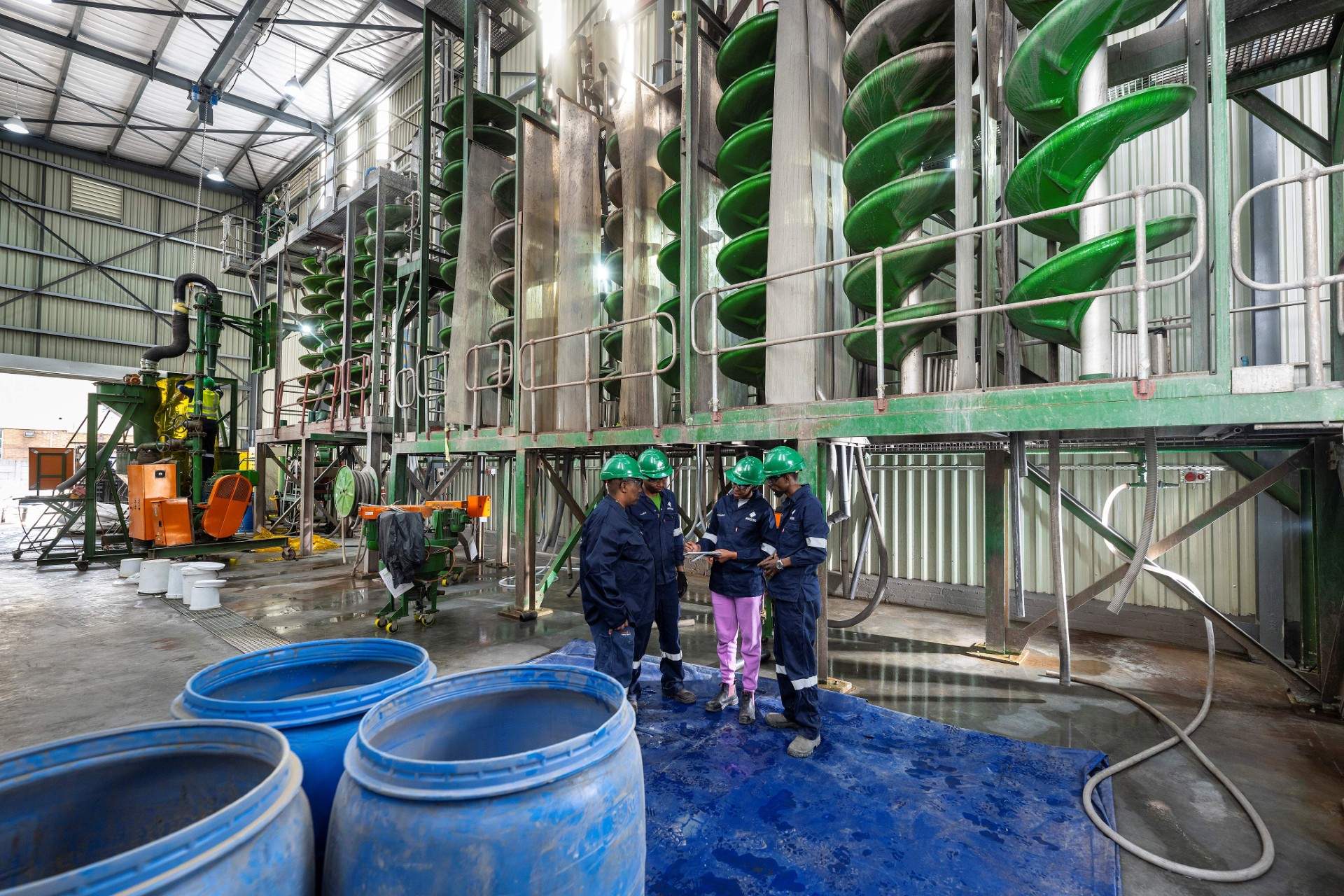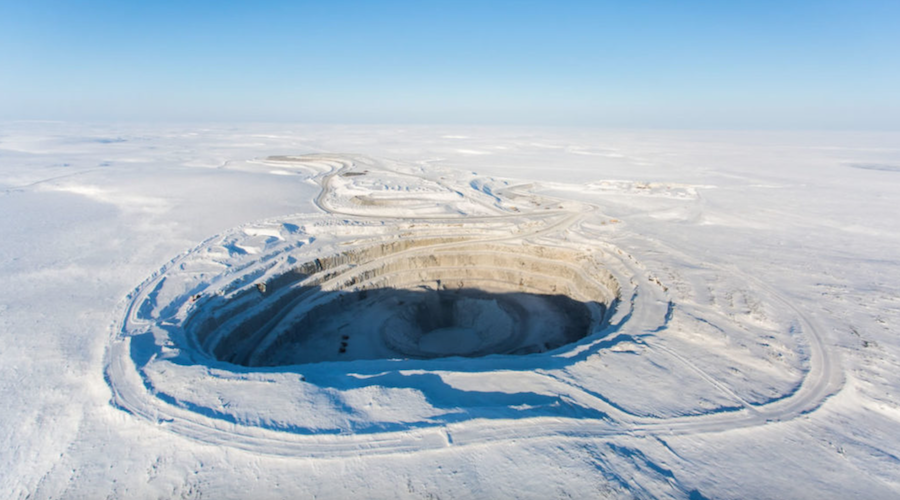EXPLORATION: The odds of finding diamonds in Ontario
The most advanced diamond exploration project in the province is De Beers Canada Exploration Inc.’s 100%-owned Victor project in the James Bay Lowlands, 90 km west of the First Nation community of Attawapiskat. The diamond giant De Beers has been exploring in this area since 1984, quietly uncovering the nature of the diamond resource and identifying potential stumbling blocks to mining.
CMJ caught up with project manager Bradley Wood, who summarized the project’s history. “I worked in the area as a summer student with De Beers in 1986 and 1987, under the direction of Richard Face-Crowther, collecting stream samples over a large area of the James Bay Lowlands. Stream sediment sampling uncovered thousands of kimberlitic indicator minerals that seemed to originate from the Attawapiskat area. During this time I discovered the first pieces of kimberlite along the banks of the Attawapiskat River.
“A large airborne geophysical survey was flown in late 1987 and was then followed up with the ground surveys. This information was used to select targets for drilling. A total of 16 kimberlites were discovered in the area during the 1988 and 1989 drilling campaigns. Initial results from the kimberlites indicated that all but one contained diamonds. However, the chemistry of the minerals in the kimberlite and the quantity of the microdiamonds recovered did not suggest that they had a very good potential for being economic.
“In the early 1990s, most of the diamond exploration in Canada was concentrated in the Northwest Territories, and the Ontario kimberlites were left unexplored during this time.
“In 1997, after reviewing data and performing further analysis on the drill core, it was decided to collect larger samples from Victor [the largest kimberlite found in the area] and some of the other kimberlites to test for macrodiamonds. The results from the 1997 sampling indicated that Victor had sufficient economic potential to warrant a larger bulk sample to be collected. I came back onto the Victor project in mid-1999 to initiate a large bulk sample program that since then has entailed the collection and processing of close to 10,000 tonnes of kimberlite from the Victor Pipe.
“For this program, an eighty-person camp was constructed at the site along with a 10-tonne/hour pilot processing plant, which includes a final diamond-recovery section. During the winter months of early 2000 and early 2001, kimberlite was extracted from the ground in two large test pits and 37 large-diameter (65-cm) drill holes to a depth of 200 m. The kimberlite was stockpiled on site until summer when it was processed and the final diamond concentrate was sent to South Africa for final diamond sorting and evaluation.”
In describing the geology of the Victor deposit, Wood said: “The size of the kimberlite is very large in comparison to the kimberlites in the NWT. The Victor kimberlite comprises two pipes–one large and one smaller pipe called Victor North and South, respectively. The two pipes nearly coalesce at the present surface and together have a surface area of approximately 15 hectares.
“The geology of the Victor kimberlite is very complex, being comprised of crater facies and hypabyssal facies kimberlite. Diatreme facies kimberlite, which is common in South African kimberlites, appears to be absent in the Attawapiskat kimberlites, which formed during the Jurassic period, between 155 and 180 million years ago. The Victor kimberlite is covered by a minimum of 6 m of glacial and marine Holocene deposits. The pipes were emplaced into 275 m of Paleozoic sediments, which overlie Archean basement. There is evidence to suggest that the pipes have been significantly eroded.
“The pipes appear to have formed by a two-stage process: (1) pipe excavation, where a large hole is blown out of the ground, and (2) pipe infilling, where kimberlite lava and ash fill up the hole. The pipe was infilled my multiple phases of eruption and each of these phases carried different diamond contents. These phases of intrusion are very complex and thus the diamond grade of the kimberlite is extremely variable across the pipe. The pipe/country rock contacts are steep (>60*). Victor North has been drilled to more than 300 m depth, and Victor South to shallower depths.
“Very little has been published on the value of the Victor deposit. The only results released to date are those from the work completed prior to 2000. From 107.9 carats of diamonds, a global grade of 32 carats per hundred tonnes was recognized with an average value of US$155/carat. This grade and value are based on a very small parcel of diamonds that were taken from only one part of the Victor kimberlite. It is now known that the diamond grade within the kimberlite is highly variable and that more work will be required to accurately determine a mineable reserve and the true value of the deposit.”
De Beers and the Attawapiskat First Nation have been successfully working together under a Memorandum of Understanding, signed in 1999, to create jobs and opportunities, and to protect the environment, during the advanced stage of exploration at Victor. About half the current workforce of 25 is from Attawapiskat; up to 80 people are expected to be in the camp this winter.
De Beers has begun an extensive environmental baseline and monitoring program.
A “desktop study” has been completed by De Beers’ mining team with input from engineering consultants Bechtel Canada and AMEC, giving a first-pass indication about economic viability. The study recommended an open pit mine that would operate around the clock. The pit would have to be dewatered starting a year before mining began, and the water would likely need to be treated before discharge. Work pads would have to be built to support heavy equipment on the muskeg. Materials would be brought in by barge or winter road from Attawapiskat and construction would last 18-24 months. Workers and perishables would be flown into the site, using an airstrip near the camp. The mine would employ about 400 people; there would be a 220-person permanent camp.
Wood cautioned: “It is likely that if Victor is mined in the future, the timetable, logistics and infrastructure could be very different from this scenario.”
The study identified specific areas that required more work, particularly water management and project economics. The company announced in late November 2001 that it would begin a pre-feasibility study this winter to help determine the economic viability of building a diamond mine at Victor.
“Water has been identified as a major concern at Victor,” said Wood, “both surface water, which causes a great deal of difficulty for siting surface infrastructure as well as for mining, and subsurface water, which flows readily through the limestone and sandstone bedrock units that surround the kimberlite. This water must be kept out of the mine for development to occur. This may be done by pumping from wells surrounding the openpit or by other means. During the pre-feasibility study we will be investigating all of these options to determine which option would be cost-effective while ensuring safety of the mine and preservation of the environment.”
He identified other obstacles. “Access to the site is very costly and several options will be investigated. The building of infrastructure at the site will be difficult and costly as the area is covered by 2 m of muskeg and water and several metres of marine clay. Engineering studies this winter will determine the best way for building foundations for mine infrastructure. We will also be looking at many other items that could affect the cost of developing a mine on the site, such as power generation, tailings disposal methods, water treatment, etc.”
Jocelyn Fraser, senior advisor–Public Affairs of De Beers Canada, concludes: “Internally we remain optimistic but feel that the additional work entailed in the pre-feasibility will be critical, and that making a production decision remains some time off.”
Other Exploration Hot Spots
Although Victor is the most advanced diamond exploration project in the prov
ince, it is by no means the only one. Here are some of the other plays.
Vancouver’s Canabrava Diamond Corp. and Navigator Exploration Corp. entered into an agreement on the Severn joint venture in 2000, which comprises two claim groups–the Kat project in the area surrounding the Attawapiskat kimberlite field and the Frontier project including all remaining targets within the 400,000 km2 joint venture area. Canabrava is the operator of the Ontario Joint Venture with Paramount Ventures & Finance Inc. and Kennecott Canada Exploration Inc., both of Vancouver. Drilling is underway on the Groundhog project (Canabrava / Paramount) between Sault Ste. Marie and Kapuskasing, where 25 targets will be drilled by the end of the first quarter of 2002. The area has been surveyed by airborne and ground geophysics. As well, Canabrava /Paramount/Kennecott expect to commence drilling northeast of Wawa in February 2002. Diamondiferous kimberlite boulder trains have been discovered and an airborne geophysical survey conducted. Final processing of strategically located till samples by Kennecott should be complete the end of January 2002.
Highway 17 provides easy access to some diamond properties just north of Wawa. In October 2001, Kennecott entered into a joint venture agreement with Burlington, Ont.-based Band-Ore Resources Ltd., to earn a 70% interest in Band-Ore’s GQ property, 15 km north of Wawa. The most interesting of several diamondiferous zones on the property is the Engagement zone, discovered in March 2001, which has already returned 340 macrodiamonds from 406 kg of sample material, including a broken white octahedral weighing in at more than a quarter of a carat. A 930-kg sample from several zones is being processed at Kennecott’s diamond laboratory in Thunder Bay, and the results should be available by the end of January.
On the 101-km2 Festival property immediately north of GQ, 100%-owner Pele Mountain Resources Inc. of Toronto has discovered a cluster of diamond-rich maar-like ultramafic volcanic complexes close to the GQ property boundary. The size of the zones and quality of stones indicate the potential for large tonnage and ore grade. These are believed to be the world’s oldest diamond deposits, at about 2.7 billion years.
At no cost to Pele, De Beers Canada Exploration has agreed to recover and evaluate diamonds from a 100-tonne bulk sample from the Cristal complex on the Festival property. (Pele has not committed to future dealings with De Beers.) In mid-December, De Beers confirmed the presence of commercial-size diamonds. A quarter of the concentrate had been analyzed and yielded 29 diamonds weighing a total of 0.54 carat down to a lower cut-off of 1 mm; the rest of the concentrate will be analyzed early this year.
With diamonds turning up in many parts of Ontario, you should think twice before going out in an electrical storm.





Comments